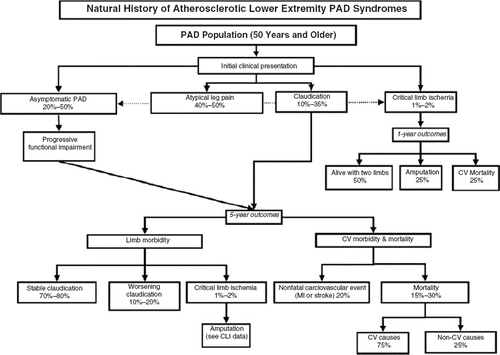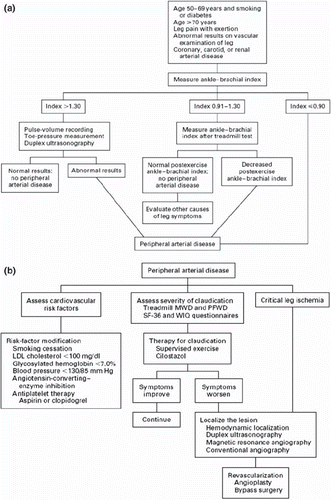Figures & data
Figure 1. The natural progression of symptoms in patients with peripheral arterial disease (PAD). (CLI = critical limb ischemia; CV = cardiovascular; MI = myocardial infarction.) Rreproduced with permission from Hirsch et al., J Am Coll Cardiol. 2006;47:1239–12 (3).

Table I. Types of ankle-brachial index (ABI) assessments and their diagnostic function.
Figure 2. a: Eevaluation of patients in whom peripheral arterial disease (PAD) is suspected; b: evaluation and treatment of patients with established PAD. (LDL = low-density lipoprotein; MWD = maximal walking distance; PFWD = pain-free walking distance; SF-36 = Medical Outcomes Study 36-Item Short Form; WIQ = Walking Impairment Questionnaire.) Rreproduced with permission from Hiatt, N Eengl J Med. 2001;344:1608–21 (34).

Table II. ACC/AHA guidelines for the management of peripheral arterial disease (PAD) (3).